Today we are taking a quick look at the Tripp-Lite ISOBAR12ULTRA. This is a 1U PDU with Isobar surge protection. As the name suggests, it has a total of twelve outlets. These devices rarely get featured, so we figured this would be worth a quick look since Patrick and I both have them now.
Tripp-Lite ISOBAR12ULTRA Hardware Overview
The unit itself is only 1U in height and is very short in-depth as one can see. One small but very nice feature is that both of the units we have came with pre-installed rackmount ears. That just saves a few minutes finding a screwdriver and screwing in rack ears so it is a nice touch. For those that do not want a rackmount unit, TrippLite has other options.
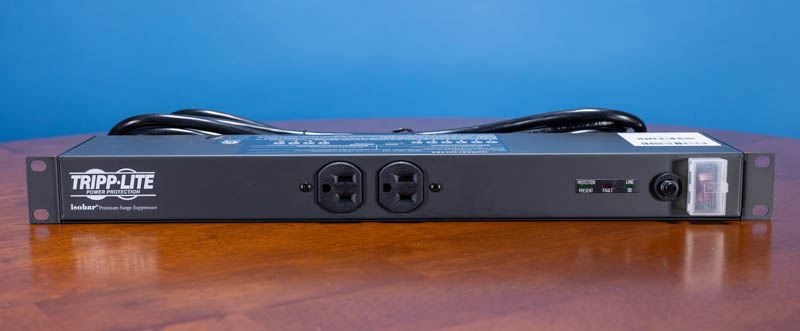
On the left side we have the nameplate and in the center two outlets. The Isobar line means that we have $25,000 in equipment protection. That warranty is part of the reason this unit costs significantly more than some of the company’s other options. We have not had something attached fail so we did not get to try the warranty process.
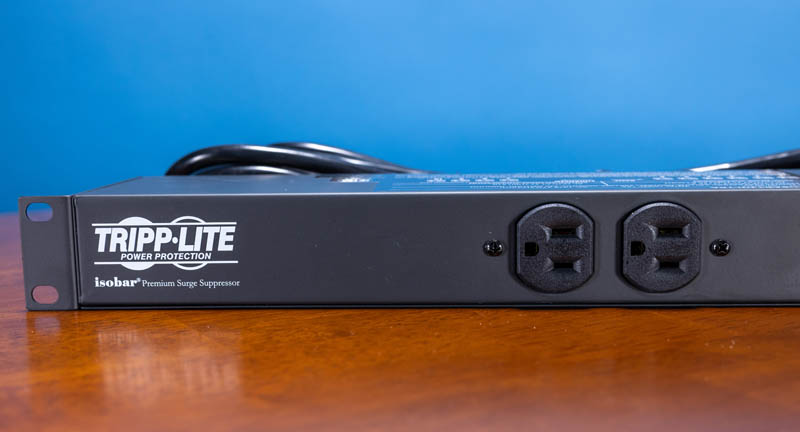
This is a 15A 120V surge protector. Something that we do not have is features like power metering with a LCD display and remote monitoring.
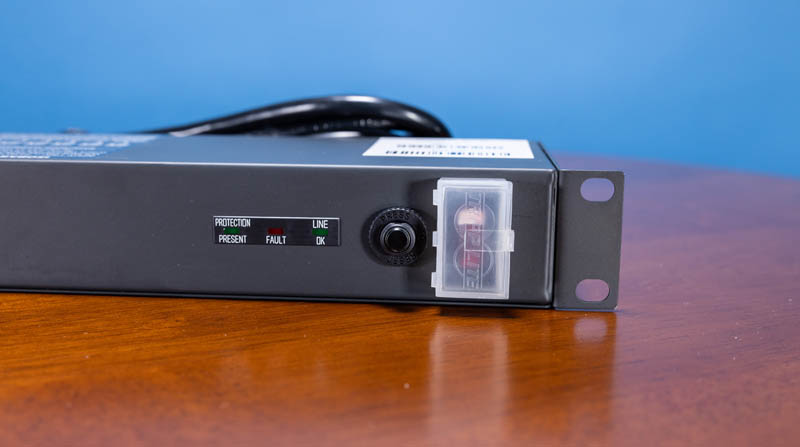
There are a few status LEDs along with a fuse, and a little box. That little box holds the power switch for the entire PDU. It is a small feature, but a nice one to ensure that the switch is not accidentally toggled.
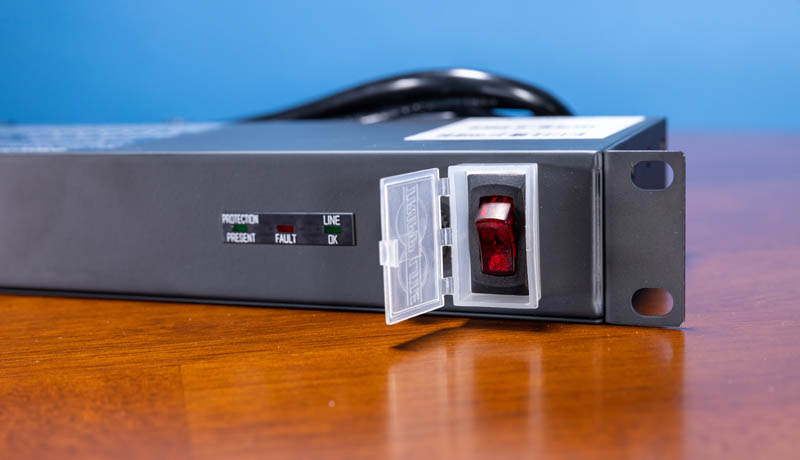
The back of the unit has ten more outlets. Six of these are black outlets like the front. Four are a beige color.

The label on the top of the unit tells us about the difference. The black outlets have “basic” noise suppression on the line. The beige outlets have “enhanced noise suppression”. These also have a UL sticker which is important for many installations.
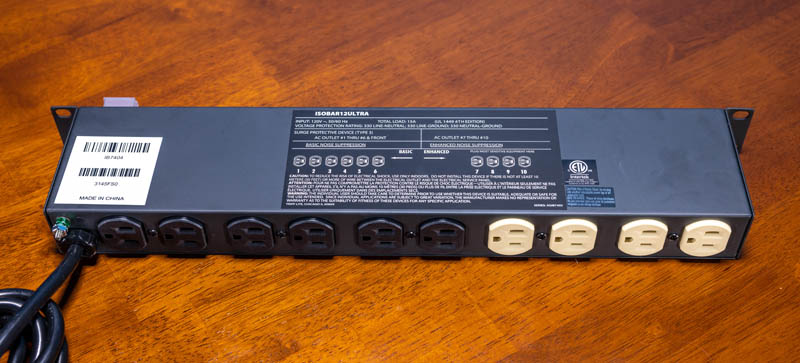
The cord attached has a standard NEMA 5-15P plug and it is a 15-foot cable giving the unit quite a bit of length.
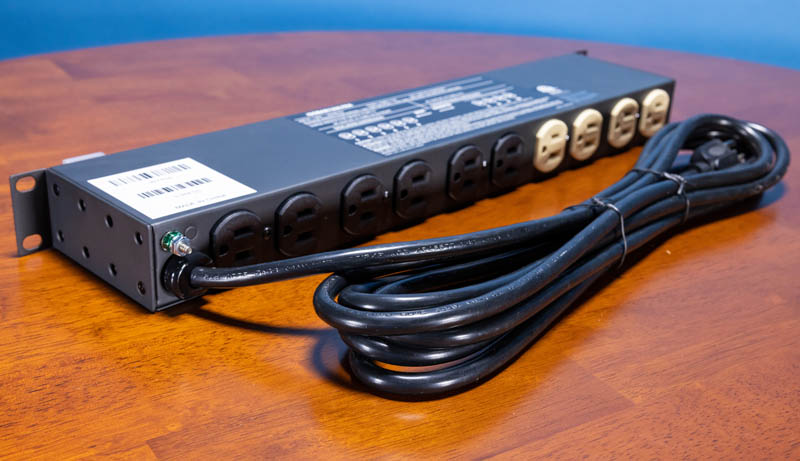
There is also a grounding point above the cord.
For those that want to see inside the unit, that is next.

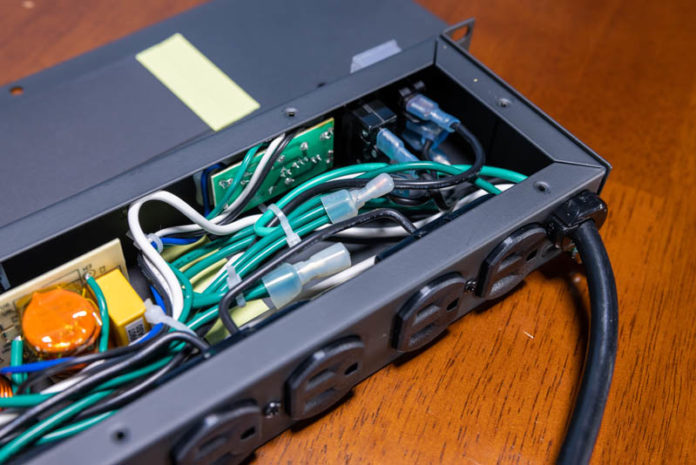

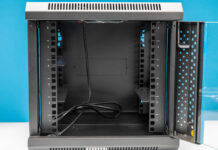

My favorite PDU is a Pyle PDBC10. It doesn’t have any protection circuits, it’s simply a big switch box (plugged into a UPS), with a front panel toggle switch for each back panel outlet. I find it invaluable for easy power cycling of individual boxes in my home lab, where each device may or may not have an actual power switch, which may or may not be obvious. I label each switch, so if I’m not home, I can say to someone who is, “Just turn off rtr-01 for thirty seconds and see if that fixes it.”
Amazon link is missing on Page 2.
I forgot about the US connectors. I am glad in Europe we use C13/C14 connectors. Much more secure.
Good review. Nice to have the pictures from inside the unit.
Did I notice in the last picture in the series, the picture just before the section on pricing, that the internal wiring employs a push-on type of connection to the outlets?
If so, how secure is that push-on connector over a long period of time? What about the risk of a wire coming loose due to thermal expansion in the push-on connector. Sure, it is inside the unit, and the unit is protected by a fuse, and ISOBar (TrippLite is now part of EATON, I think) is a reputable company that has been building these for years, and it does have a UL stamp… but using a push-on type of connector seems like a cheesy (but allowed & probably legal) manufacturing shortcut.
Most residential certified electricians will tell you to use the “stiff but always stays tight” screw terminals and not the push-on terminals. Some residential building codes do not permit the use of push-on terminals in electrical outlets. I know my locality and US state do not allow it.
I only see ETL, not UL certification.
Design & Aesthetics: 9.1
Performance: 9.2
Feature Set: 8.5
Value: 9.1
Summary: We think this is a great PDU, but we would’ve loved to see it in space gray, and with one more port
It would be really interesting to try out the insurance claims process. I have heard that it’s a bit of a scam, not worth the paper it’s written on, because it’s next to impossible to prove that a surge that damaged equipment came through the insured product.
For example if a server stopped working after a thunderstorm, and there was no visible damage, how would you prove the power board allowed the surge through and it didn’t come in via another path, such as the Ethernet cable? (Those only have isolation up to around 1500 volts so a spike larger than this would make it through.) Did you have any powered USB devices plugged in, like an external hard drive? Can you prove it was powered through the same insured power board? Because if not, they’ll just say the surge came in that way, through the USB port, bypassing their power board’s protection – no insurance payout.
So to have any chance of a successful claim, you’d have to have photos of how everything is plugged in, and not have any other paths for a surge to enter your equipment – no network cables, USB cables, TV antenna cables, or anything else that connects to equipment that bypasses the insured power board.
You might say well if the power board had burn marks on it that’s a pretty clear indicator that a surge came in that way, but in order for that to happen you’d need such a significant surge that it could well be a direct lightning strike. You’d have to read the fine print because a lot of power boards only protect against surges not lightning strikes, as lightning protection requires an entirely different component type (something like gas arrestor tubes rather than MOVs).
I’ve never tried to claim myself so don’t take my word for it, but I’ve heard it is very difficult to get a successful claim, and I can really see why.